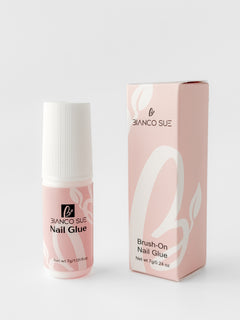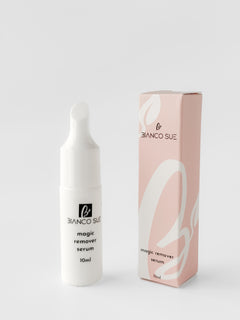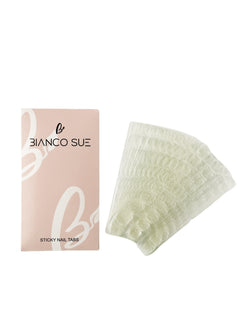Did you know the global press-on nails market is growing? They offer a quick, affordable way to enjoy great nails without a salon visit. Below you'll find clear instructions on how to remove them safely using everyday items. Whether you need to give your nails a break or want a new style, these steps help you avoid damage.
Gather Your Materials
Start by collecting these items: acetone, cotton balls, nail tools like a nail file, and a small bowl. A reusable shopping bag can protect surfaces from spills. If you don’t have acetone, check chemists or online; it dissolves adhesive well. Use a nail file to lightly buff your nails for more effective acetone use. Wooden cuticle pushers help lift softened nails gently. Patience is key to keep your natural nails healthy. Finish with a manicure, nourishing hand cream, or cuticle oil to care for your fingertips.
Prepare Your Workspace
Set up a comfortable, flat area that you don’t mind exposing to acetone, such as an old table or a towel-covered surface. Arrange your tools within reach to avoid interruptions. Good lighting will help you see the nail edges clearly. Playing some music can keep you relaxed. A well-organized workspace minimizes spills and helps you work smoothly throughout the process.
Trim and File Nails
Begin by using a quality nail clipper to trim the press-on nails, cutting them close to your natural nail. This reduces the area needing acetone, speeding up removal. Next, file the edges to create a smooth border that lets acetone work more effectively. Soak your nails in warm, soapy water for 10 to 15 minutes to help loosen the glue. Then, gently lift the nails using a wooden cuticle pusher. For extra caution, soak or apply acetone if needed before proceeding. Always handle your nails slowly to avoid damage.

Soak Nails in Warm Water
Start with a soak to loosen the adhesive. Fill a bowl with warm water (not boiling) and submerge your nails for a few minutes. The warmth helps break down the glue, making the removal process gentler. Some people add olive or almond oil to the water for extra nourishment. This step not only softens the adhesive but also creates a brief, relaxing spa moment for your hands.
Use an Acetone-Free Remover
If you worry about potential nail damage, opt for an acetone-free remover. These removers are milder on both nails and skin, keeping them more moisturized. Many formulas include natural compounds like soy to gently remove polish while strengthening nails. Although they work more slowly than acetone, the benefit is fewer harsh effects and a more pleasant scent.
Gently Pry Off Nails
When the press-ons are softened, use a wooden cuticle stick to gently separate them from your natural nails. Start at the sides and carefully work the stick under the nail, moving horizontally to ease it off. If parts are still stuck, wait a few more minutes with a bit of remover to further dissolve the adhesive. Once removed, press cuticle oil or moisturizer into your nails to keep them soft.
Remove Residue with Cotton Pads
After removing the press-ons, there may be leftover adhesive. Soak a cotton pad in acetone-based polish remover and hold it against your nail for a few seconds. Wipe the nail smoothly with the pad to clear off the residue. Repeat this process until your nails are clean. When finished, rinse your hands well to remove any acetone. Follow up with a generous application of nail oil or hand cream to restore moisture.
Use a Nail Buffer
After cleaning, use a nail buffer to smooth the nail surface without harsh abrasion. Buffing removes minor imperfections and brings out a natural shine. Apply light pressure to avoid weakening your nails, as a gentle pass is sufficient to even the surface and promote a healthy look.
Buff Gently for Smoothness
A light buffer treatment evens out ridges on your nails. Regular, gentle buffing improves circulation in the nail bed and supports healthy growth while keeping the nails shiny. Avoid excessive buffing to ensure you do not remove too much of your natural nail’s strength.
Moisturize Your Nails
Once the press-ons are gone, hydrate your nails with a rich lotion or natural oil. Oils like jojoba or sweet almond not only moisturize but also help strengthen your nails. Massaging the product into your nails and cuticles boosts absorption and supports flexibility. Drinking plenty of water also helps maintain hydration from the inside.
Restore Nail Strength
Focus on strengthening your nails after removal. Include biotin-rich foods such as eggs, nuts, and leafy greens in your diet to promote recovery. A strengthening polish containing keratin or calcium can also rebuild flexibility over time. With regular use of these treatments, you’ll notice your nails regaining strength and durability gradually.
Apply Strengthening Treatments
Apply a dedicated nail treatment that supports repair and fortifies the nail structure. Products with keratin or collagen work to rebuild nail resilience and encourage healthy regrowth. Continue treatment over a few weeks to see visible improvement in your nails’ strength.
Allow Nails to Breathe
Give your nails regular breaks from enhancements so they can recover naturally. Periods without nail enhancements let the nail bed regenerate and strengthen, setting the foundation for future nail care. This downtime is beneficial for maintaining the overall health and flexibility of your nails.
Avoid Excessive Buffing
Use a nail buffer sparingly to avoid thinning the protective layer on your nails. Overbuffing can make nails more fragile and prone to breakage. Stick to a light, few passes with a fine grit buffer to smooth away residual adhesive and maintain nail integrity.
Protect Nails with a Base Coat
Before applying any new press-on nails, protect your natural nails with a base coat. This barrier limits direct contact between the adhesive and your natural nail, reducing damage during application. A base coat also helps press-ons adhere better, extending their wear without compromising nail health.
Choose Gentle Polish Removers
Select non-acetone polish removers that minimize damage to your nails. Removers enriched with aloe vera or vitamin E help keep nails and surrounding skin hydrated. These gentler formulas protect against dryness and brittleness, ensuring that your natural nails remain robust during and after the removal process.
Tips Specific to the Australian Market
Australia’s dry climate may cause press-on nails to lift more easily. To improve adhesion, use a nail primer before applying press-ons. File your natural nails and clean them with an alcohol wipe to remove oils for a better bond. Seasonal changes and humidity fluctuations can affect how your nails behave: during hotter periods, nails may absorb moisture and swell, whereas cooler weather may cause contraction. Look for locally available brands that offer products tailored to these conditions. The right products can help your press-ons last longer and stay securely in place.





